Signals, regulatory networks, and materials that build and break bacterial biofilms
- PMID: 19487730
- PMCID: PMC2698413
- DOI: 10.1128/MMBR.00041-08
Signals, regulatory networks, and materials that build and break bacterial biofilms
Abstract
Biofilms are communities of microorganisms that live attached to surfaces. Biofilm formation has received much attention in the last decade, as it has become clear that virtually all types of bacteria can form biofilms and that this may be the preferred mode of bacterial existence in nature. Our current understanding of biofilm formation is based on numerous studies of myriad bacterial species. Here, we review a portion of this large body of work including the environmental signals and signaling pathways that regulate biofilm formation, the components of the biofilm matrix, and the mechanisms and regulation of biofilm dispersal.
Figures


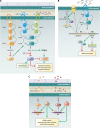
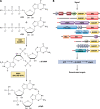
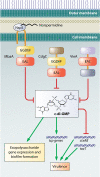



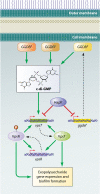


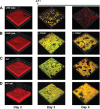
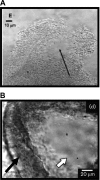

Similar articles
-
[Bacterial biofilms as a natural form of existence of bacteria in the environment and host organism].Zh Mikrobiol Epidemiol Immunobiol. 2011 May-Jun;(3):99-109. Zh Mikrobiol Epidemiol Immunobiol. 2011. PMID: 21809653 Review. Russian.
-
Biofilm dispersal: multiple elaborate strategies for dissemination of bacteria with unique properties.Mol Microbiol. 2017 Jul;105(2):188-210. doi: 10.1111/mmi.13698. Epub 2017 May 9. Mol Microbiol. 2017. PMID: 28422332 Review.
-
Biofilm dispersal: mechanisms, clinical implications, and potential therapeutic uses.J Dent Res. 2010 Mar;89(3):205-18. doi: 10.1177/0022034509359403. Epub 2010 Feb 5. J Dent Res. 2010. PMID: 20139339 Free PMC article. Review.
-
Environmental signals and regulatory pathways that influence biofilm formation.Mol Microbiol. 2004 May;52(4):917-24. doi: 10.1111/j.1365-2958.2004.04036.x. Mol Microbiol. 2004. PMID: 15130114 Review.
-
Living in the matrix: assembly and control of Vibrio cholerae biofilms.Nat Rev Microbiol. 2015 May;13(5):255-68. doi: 10.1038/nrmicro3433. Nat Rev Microbiol. 2015. PMID: 25895940 Free PMC article. Review.
Cited by
-
Insights into molecular mechanisms of phytochemicals in quorum sensing modulation for bacterial biofilm control.Arch Microbiol. 2024 Nov 5;206(12):459. doi: 10.1007/s00203-024-04171-5. Arch Microbiol. 2024. PMID: 39499335 Review.
-
Prevention of uropathogenic E. coli biofilm formation by hydrophobic nanoparticle coatings on polymeric substrates.RSC Appl Interfaces. 2024 Mar 20;1(4):667-670. doi: 10.1039/d3lf00241a. eCollection 2024 Jul 9. RSC Appl Interfaces. 2024. PMID: 38988413 Free PMC article.
-
Exploring the Differential Impact of Salt Stress on Root Colonization Adaptation Mechanisms in Plant Growth-Promoting Rhizobacteria.Plants (Basel). 2023 Dec 3;12(23):4059. doi: 10.3390/plants12234059. Plants (Basel). 2023. PMID: 38068694 Free PMC article.
-
Deployment of Genetic and Genomic Tools Toward Gaining a Better Understanding of Rice-Xanthomonas oryzae pv. oryzae Interactions for Development of Durable Bacterial Blight Resistant Rice.Front Plant Sci. 2020 Aug 4;11:1152. doi: 10.3389/fpls.2020.01152. eCollection 2020. Front Plant Sci. 2020. PMID: 32849710 Free PMC article. Review.
-
Backbone and sidechain (1)H, (15)N and (13)C assignments of Tyrosine Phosphatase related to Biofilm formation A (TpbA) of Pseudomonas aeruginosa.Biomol NMR Assign. 2013 Apr;7(1):57-9. doi: 10.1007/s12104-012-9376-z. Epub 2012 Mar 6. Biomol NMR Assign. 2013. PMID: 22392344 Free PMC article.
References
-
- Aldridge, P., and U. Jenal. 1999. Cell cycle-dependent degradation of a flagellar motor component requires a novel-type response regulator. Mol. Microbiol. 32379-391. - PubMed
-
- Allesen-Holm, M., K. B. Barken, L. Yang, M. Klausen, J. S. Webb, S. Kjelleberg, S. Molin, M. Givskov, and T. Tolker-Nielsen. 2006. A characterization of DNA release in Pseudomonas aeruginosa cultures and biofilms. Mol. Microbiol. 591114-1128. - PubMed
Publication types
MeSH terms
Grants and funding
LinkOut - more resources
Full Text Sources
Other Literature Sources

